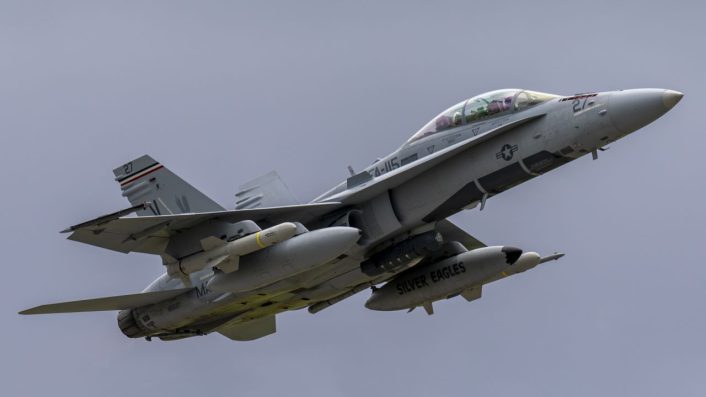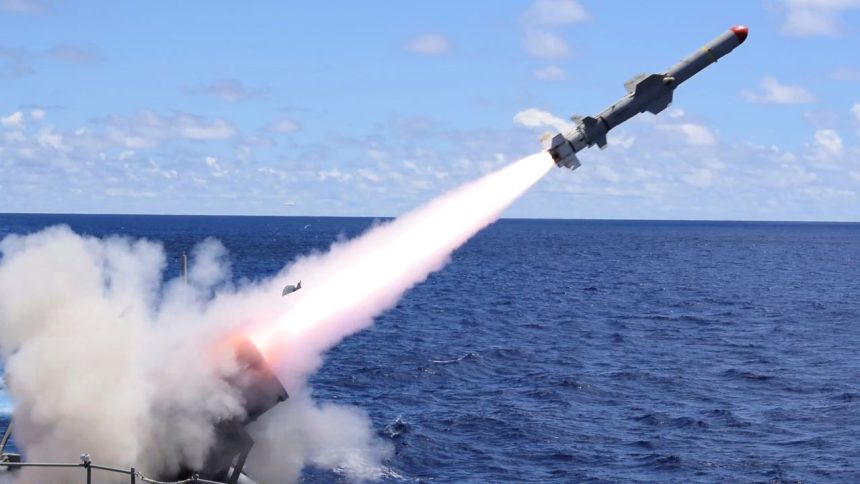Taiwan has announced a new Coastal Defense Command, scheduled to operationalize by 2026 and to employ shore-fired anti-ship Harpoons Block II and Taiwan’s own Hsiung Feng-series of anti-ship missiles.
Reports from Taiwan say the first batch of 100 U.S.-made land-based Harpoon anti-ship missiles, or equipment related to those, arrived at Kaohsiung Port on Sep. 27, 2024. The nature of the deliveries, including which parts or missile-related infrastructure, is not yet clear. The reports, however, suggest that the equipment gives the Republic of China military some lead time in preparing to handle, familiarize and possibly quickly operationalize the missiles after the actual deliveries.
According to Taiwan News, in Oct. 2020, the U.S.approved the sale of the 400 ground-launched RGM-84L-4 Harpoon Block II AShM units, four RTM-84L-4 Harpoon Block II exercise missiles, 411 containers, 100 Harpoon Coastal Defense System Launcher Transporter Units and 25 radar trucks. Taiwan then requested an additional 60 missiles in 2022, which the U.S.’s DSCA (Defense Security Cooperation Agency) approved in September of that year.
The additional weapons included 60 AGM-84L-1 Harpoon Block II missiles and four ATM-84L-1 Harpoon Block II exercise missiles. These are air-launched versions of the Harpoon, which Taiwan already employs on its F-16V Vipers and are often carried during patrol missions.
Other equipment related to that sale approval consisted of Harpoon GCUs (Guidance Control Units); Harpoon Radar Seekers; Harpoon Radar Altimeters; Harpoon CATMs (Captive Air Test Missiles); containers; spare and repair parts; support and test equipment; publications and technical documentation; personnel training and training equipment; U.S. government and contractor representatives’ technical assistance; engineering and other related elements of logistics support.
Royal Netherlands Navy De Zeven Provinciën-class frigate HNLMS Tromp (F803) fires a Harpoon missile during a long-planned, live fire sinking exercise as part of Exercise Rim of the Pacific (RIMPAC) 2024. (DVIDS) pic.twitter.com/cDSIJRrEc8
— Ian Ellis (@ianellisjones) July 23, 2024
Taiwan’s Harpoon-armed anti-ship missile bases
The report from Taiwan added that the first phase of the deliveries, including 128 missiles, is supposed to be completed in 2026, with the second and final phase expected by the end of 2028. Liberty Times, quoting MND (Ministry of National Defense) officials, said that early deliveries might be part of a plan to “implement some detailed projects and integration” works “in advance.”
The Ministry of National Defense had budgeted the full package of US $2.24 billion for the missiles, but then allocated an additional $4 billion required for constructing coastal missile bases and land infrastructure to handle them. The Ministry has also announced a new Coastal Defense Command, scheduled to operationalize by 2026 to manage these bases. The bases will host the shore-mounted anti-ship Harpoons Block II and Taiwan’s own Hsiung Feng-series of anti-ship missiles.
SCMP (South China Morning Post) reported on Aug. 27 that the government awarded four contracts, worth $148.7 million, to build the five facilities in the south of the country. These would include one base each in Tainan and Kaohsiung and two in Pingtung, all counties facing the mainland across the Taiwan Strait. The bases are expected to be ready in three years.
The Navy’s original plan included a sixth Harpoon missile base, in the southwestern county of Yunlin. However, this plan was met by strong opposition from residents concerned about noise and the risk of becoming a target in the event of an attack by the People’s Liberation Army (PLA).

The Harpoon Block II missile
The RGM-84L Harpoon Block II was first delivered to the U.S. Navy in 2009. It combines the inertial measuring unit and software from the Joint Direct Attack Munition and the SLAM-ER’s integrated inertial/GPS guidance. These improvements to the missile’s guidance system allow it to perform in littoral waters.
Additionally, the Block II Harpoon allows for over-the-horizon targeting via helicopter, enabling targeting of concealed or cluttered targets beyond the radar’s line of sight. The missile carries a 224 kg warhead and has a Circular Error Probability (CEP) of 10-13 meters. The developer Boeing says that, besides “ships at sea” and “ships at crowded ports,” it can also easily “strike land targets, including coastal defense sites, surface-to-air missile sites, exposed aircraft and industrial facilities.”
ROC Air Force’s upgraded F-16V jet debuts in this year’s Han Kuang wargames. This pic is rare as it shows the jet carrying the AGM-84 Harpoon anti-ship missile – a reminder of Taiwanese Vipers’ maritime strike role besides air defense. https://t.co/9xfNkj0qEI pic.twitter.com/DrdJSNp8H3
— Collin Koh 🇸🇬🇺🇦 (@CollinSLKoh) May 28, 2019
According to the RAN (Royal Australian Navy), another Harpoon Block II user, for anti-ship missions such as open-ocean and near-land, the GPS/INS eliminates midcourse guidance errors en route to the target area. Improved navigation solutions combined with launch system advancements allows a high hit probability against ships very close to land or traveling in congested sea lanes.
CSIS (Center for Strategic and International Studies) says that Boeing introduced the Harpoon Next Generation (or Harpoon Block II+ Extended Range) in 2015, to go beyond its unclassified range of 124 km. The new variant adopted a lighter yet equally lethal warhead and an improved turbojet that can take to double the range at 248 km.
Chinese sea and air incursions persist
The PLA Navy and Air Force’s flights into Taiwan’s airspace meanwhile continued between Sep. 25 and Sep. 28. From 6 pm on Sep. 25 to 6 am on Sep. 26, the RoC’s MND detected 43 aircraft and eight PLAN vessels around Taiwan. For the corresponding time on the remaining two days, it detected and tracked 41 PLA aircraft, six PLAN vessels and 15 PLA aircraft and seven PLAN vessels respectively.
15 PLA aircraft and 7 PLAN vessels operating around Taiwan were detected up until 6 a.m. (UTC+8) today. 10 of the aircraft crossed the median line and entered Taiwan’s southwestern and southeastern ADIZ. We have monitored the situation and responded accordingly. pic.twitter.com/k0gZ8AU6h6
— 國防部 Ministry of National Defense, ROC(Taiwan) 🇹🇼 (@MoNDefense) September 28, 2024
The tracks saw Chinese aircrafts flying circular routes on their side of the notional median line, while other aircraft and/or drones flew over Taiwan’s southwestern, southern and southeastern waters.









